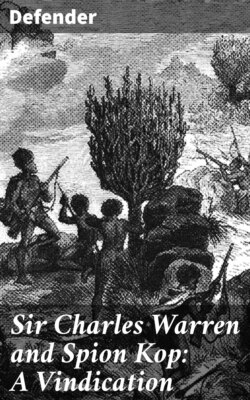Читать книгу Sir Charles Warren and Spion Kop: A Vindication - Defender - Страница 8
На сайте Литреса книга снята с продажи.
JERUSALEM, 1867 TO 1870
ОглавлениеTable of Contents
The object of the Palestine Exploration Fund was the illustration of the Bible, and it originated mainly through the exertions of Sir George Grove, who formed an influential committee, of which for a long time Sir Walter Besant was secretary. Captain (afterwards Sir) Charles Wilson and Lieut. Anderson, R.E., had already been at work on the survey of Palestine, and, in 1867, it was decided to undertake excavations at Jerusalem to elucidate, if possible, many doubtful questions of Biblical archæology, such as the site of the Holy Sepulchre, the true direction of the second wall and the course of the first, second, and third walls, involving the sites of the towers of Hippicus, Phasælus, Mariamne, and Psephinus, and many other points of great interest to the Biblical student.
The task was entrusted to Lieut. Warren, who was assisted by non-commissioned officers of Royal Engineers. The difficulties in the way of carrying it out were great—obstruction on the part of the Pashas, physical dangers, and want of money. As regards the first, only great tact and firmness prevented the complete suspension of the work. ‘Indeed,’ says Major-General Whitworth Porter in his ‘History of the Corps of Royal Engineers,’ ‘the Vizierial letter, under which the party was supposed to be acting, expressly forbade excavations at the Noble Sanctuary and the various Moslem and Christian shrines. How, in spite of this, Warren succeeded in his object is well told in his “Underground Jerusalem.”’
With regard to physical danger Dean Stanley wrote: ‘In the plain and unadorned narrative of Captain Warren,[1] the difficulties and dangers of the undertaking might almost escape notice. Yet the perils will appear sufficiently great to any one who draws out from the good-humoured story the fact that these excavations were carried on at the constant risk of life and limb to the bold explorers. The whole series of their progress was a succession of “lucky escapes.” Huge stones were day after day ready to fall, and sometimes did fall, on their heads. One of the explorers was “injured so severely that he could barely crawl out into the open air”; another extricated himself with difficulty, torn and bleeding, while another was actually buried under the ruins. Sometimes they were almost suffocated by the stifling heat; at other times they were plunged for hours up to their necks in the freezing waters of some subterranean torrent; sometimes blocked up by a falling mass without light or escape.’
The third difficulty was want of money; for when Warren left London he carried off all the money of the Fund (300l.) for the expenses of the party, the Committee hoping that, as the excavations proceeded, public interest would be shown by a flow of subscriptions. The Committee said: ‘Give us results and you can have money.’ Warren replied: ‘No money, no results.’ In fact, however, he had at one time advanced no less than 1,000l. out of his own resources.
The work went on for some three years with occasional interruptions. Warren returned home in 1870, and spent the following year in preparing the results of his work for the Committee of the Fund and for the Press.
Sir Walter Besant, in his ‘Twenty-one Years’ Work in the Holy Land,’ writes:
‘It is impossible here to do more than to recapitulate the principal results of the excavations, which are without parallel for the difficulties presented and the courage displayed in overcoming them.... It is certain that nothing will ever be done in the future to compare with what was done by Warren.... It was Warren who restored the ancient city to the world; he it was who stripped the rubbish from the rocks and showed the glorious temple standing within its walls 1,000 feet long, and 200 feet high, of mighty masonry: he it was who laid open the valleys now covered up and hidden; he who opened the secret passages, the ancient aqueducts, the bridge connecting the temple and the town. Whatever else may be done in the future, his name will always be associated with the Holy City which he first recovered.’
So much was this the case that for a long time he was known as ‘Jerusalem Warren.’
In addition to ‘Underground Jerusalem’ he wrote ‘The Temple or the Tomb.’
What high value was placed upon Captain Warren’s services by the Administration of the Fund may be gathered from the following quotation from ‘Our Work in Palestine,’ published by Bentley & Son in 1875, a book which had then reached its eighth thousand:—
‘Let us finally bear witness to the untiring perseverance, courage, and ability of Captain Warren. Those of us who know best under what difficulties he had to work can tell with what courage and patience they were met and overcome. Physical suffering and long endurance of heat, cold, and danger were nothing. There were besides anxieties of digging in the dark, anxieties as to local prejudice, anxieties for the lives of brave men—Sergeant Birtles and the rest of his Staff—anxieties which we may not speak of here. He has his reward, it is true. So long as an interest in the modern history of Jerusalem remains, so long as people are concerned to know how sacred sites have been found out, so long will the name of Captain Warren survive.’
